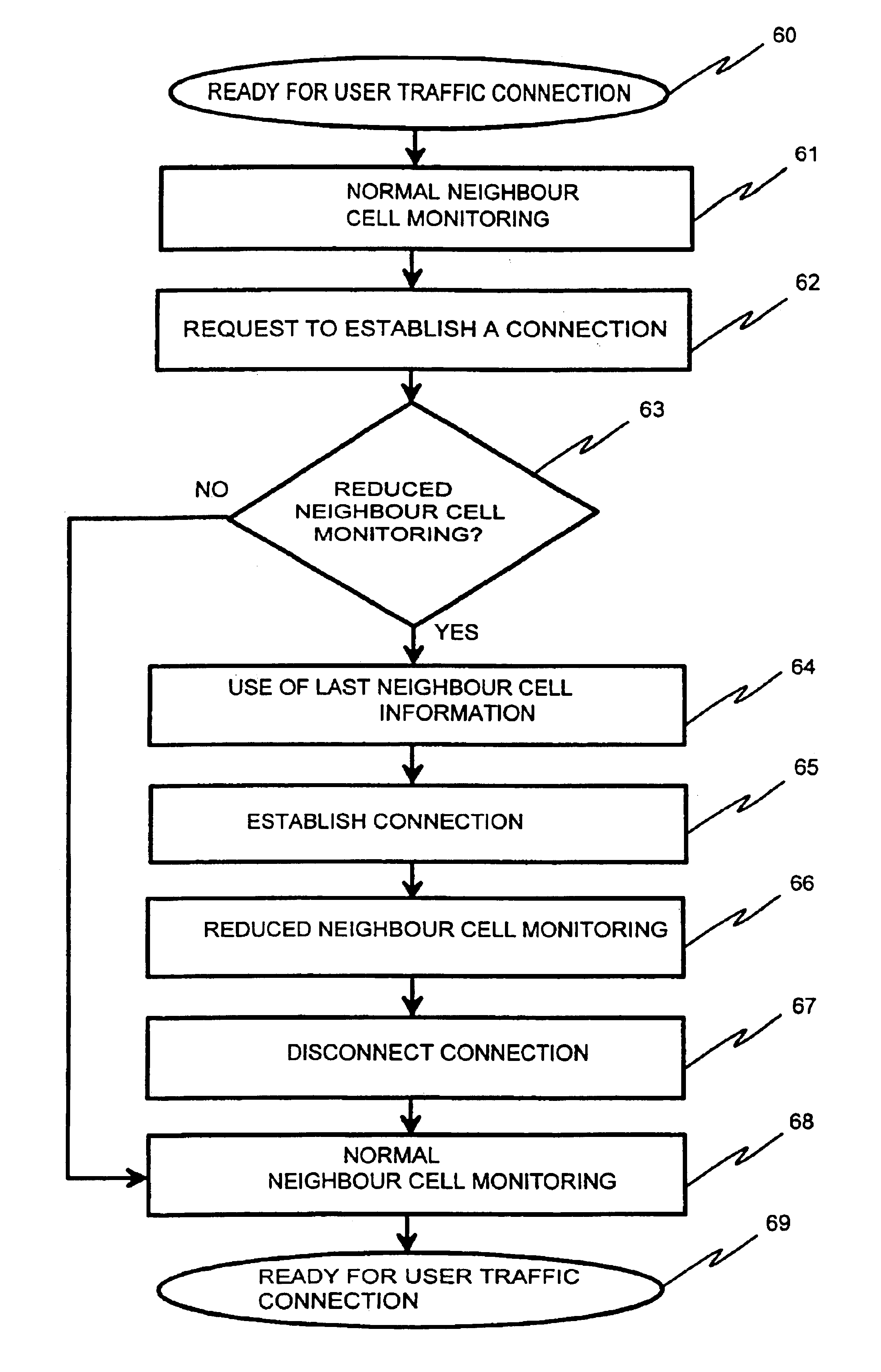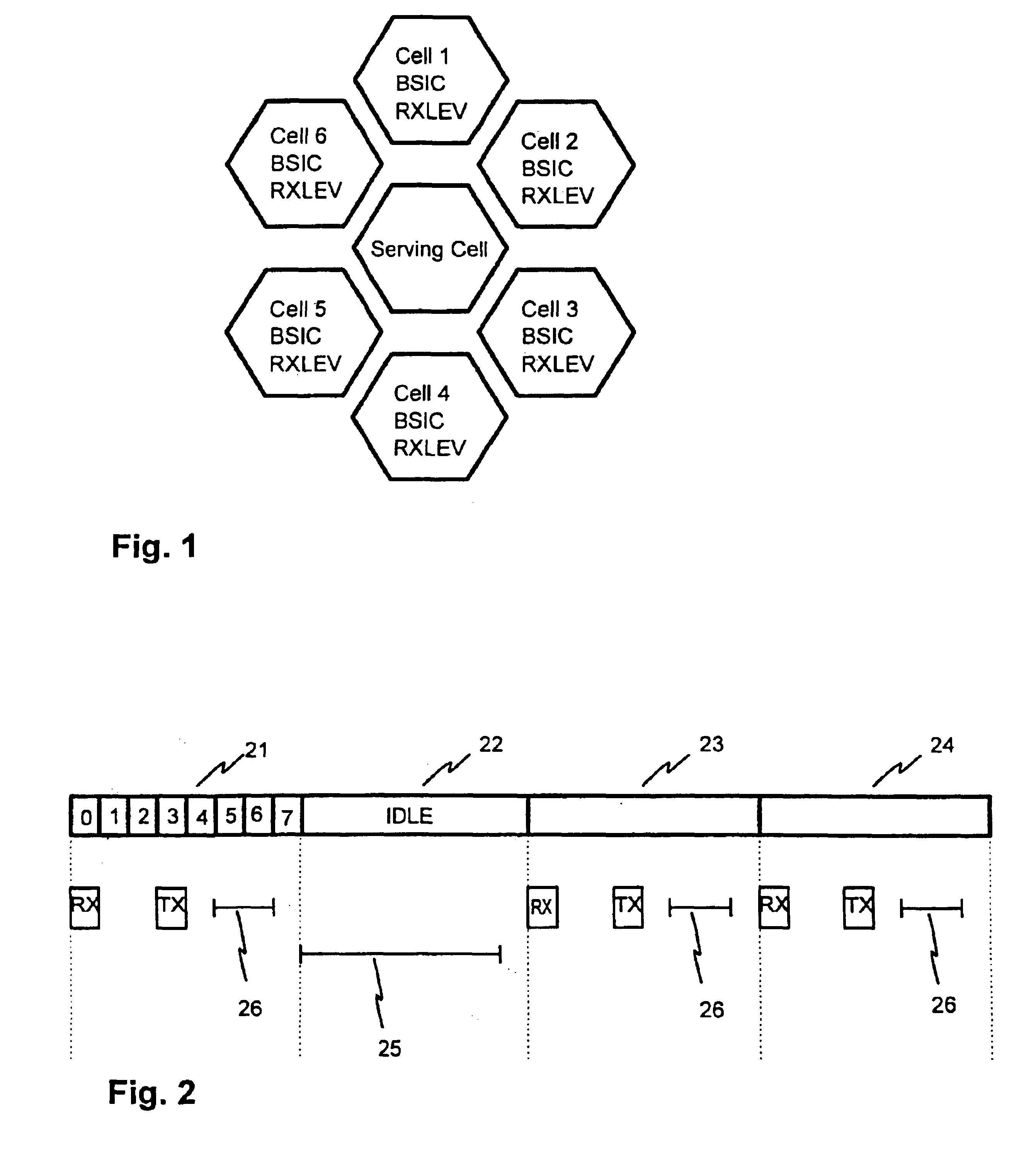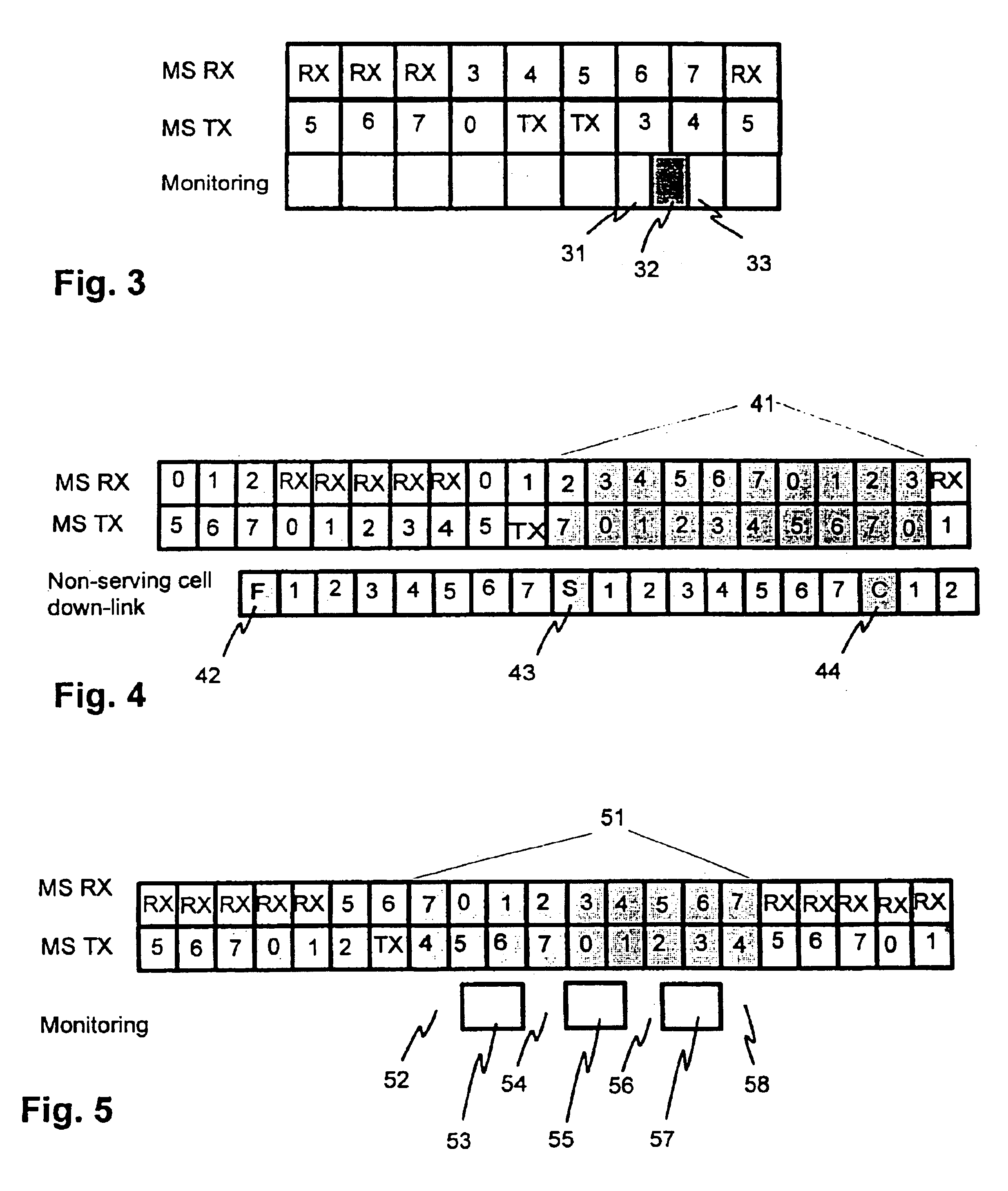Method to determine channel information in a cellular system, and a mobile station
a mobile station and channel information technology, applied in the field of determining channel information in a cellular system and a mobile station, to achieve the effect of improving the efficiency of data communication, reducing the cost of operation, and simplifying the structure of the mobile station
- Summary
- Abstract
- Description
- Claims
- Application Information
AI Technical Summary
Benefits of technology
Problems solved by technology
Method used
Image
Examples
Embodiment Construction
[0032]FIG. 5 shows a usage according to the invention for monitoring neighbour cells in a stationary mobile station using a half-duplex HSCSD protocol. Level measurements 53, 55, 57 of the neighbour base station's transmission are made only during the Idle period shown in the figure, and not during the TDMA frames used for the actual user traffic transmission. This Idle period contains one whole normal empty frame and any preceding or succeeding unused time slots. In the example of FIG. 5 the Idle period begins when the stationary mobile station has finished to transmit TX information in the transmission time slot 3. The Idle period is ends when the stationary mobile station begins to receive the base station's transmission RX in the time slot 0 of the reception frame. In the example a total of 9 time slots is available for the level measurements of the neighbour cell transmissions. During the available Idle period the frequency synthesiser of the stationary mobile station has time ...
PUM
 Login to View More
Login to View More Abstract
Description
Claims
Application Information
 Login to View More
Login to View More - R&D
- Intellectual Property
- Life Sciences
- Materials
- Tech Scout
- Unparalleled Data Quality
- Higher Quality Content
- 60% Fewer Hallucinations
Browse by: Latest US Patents, China's latest patents, Technical Efficacy Thesaurus, Application Domain, Technology Topic, Popular Technical Reports.
© 2025 PatSnap. All rights reserved.Legal|Privacy policy|Modern Slavery Act Transparency Statement|Sitemap|About US| Contact US: help@patsnap.com



